What Are The Best Plants For Your Pet Snake Habitat?
Live plants benefit a snake’s habitat by giving the vivarium a natural look. They can provide shelter for some arboreal snake species. They also help with waste management by removing your snake’s nitrogen.
Finding the right plants for your pet snake’s home is critical because you don’t want to choose anything that will harm your snake, and caring for the plants shouldn’t be too difficult. Snakes require enrichment in their enclosures.
The best plants for a snake’s habitat will depend on several factors. These factors include the activity level of your snake, upkeep, and humidity requirements. However, selecting the right plant for your specific snake enclosure must be carefully thought out and planned.
The focus of this article will help you learn more about choosing the best plant for your pet snake habitat.
How to Select the Best Plants
As stated earlier, plants will help liven up your snake’s habitat. Just ensure you avoid anything that could be harmful to your pet. Also, ensure they won’t hurt them if eaten and won’t get too big for the enclosure.
You should also know what plants need to grow and thrive. This way, you can care for your snake and the surrounding plants.
Some plants thrive in humid cages, while others thrive in dry environments. It would help to choose your plants based on the snake’s humidity requirements.
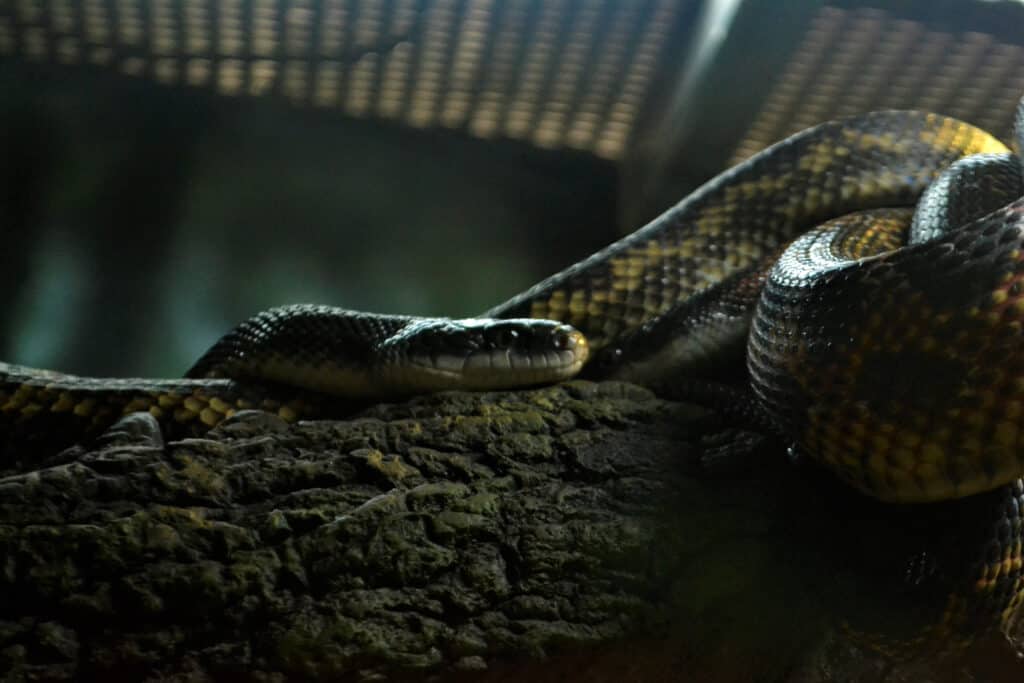
Humid Habitat
Some pet snakes, especially those living in more humid places, would be happier with a specific humidity level. The plants required will withstand nighttime temperature drops.
If your snake already has a UV light, this can sometimes suffice as a light source for your plants. If not, you’ll need to purchase a separate light source.
Here are some lovely plants that thrive in humid conditions:
- Orchids
- Rosary vines
- Corn plants
- Bromeliads
- Chinese evergreens
- Boston ferns
Dry Habitat
Snakes that thrive in more arid environments prefer low-humidity habitats. Plants that can survive in these conditions require less care.
You may have seen them recently on the internet as the best plants for new plant owners. They are pleasing to the eye and simple to maintain.
Here are some examples of dry enclosure plants:
- Dwarf aloe
- Geranium
- Thornless cacti
- Ponytail palms
- Elephant grass
- Pearl string
13 Best Plants For Your Pet Snake Habitat
There are over a thousand plant species available for your pet snake habitat. As a beginner, you’re probably unsure how to narrow the choices. Hence, we have helped you narrow down the best plants below.
1. Boston Fern (Nephrolepis exaltata)
The Boston fern is popular among plant enthusiasts and can be found in most snake habitats. These ferns can survive in low light but rarely grow well without adequate sunlight.
You can plant them on your pet’s substrate to provide plenty of hiding places. They are commonly found in hanging baskets but can also plant directly on the substrate.
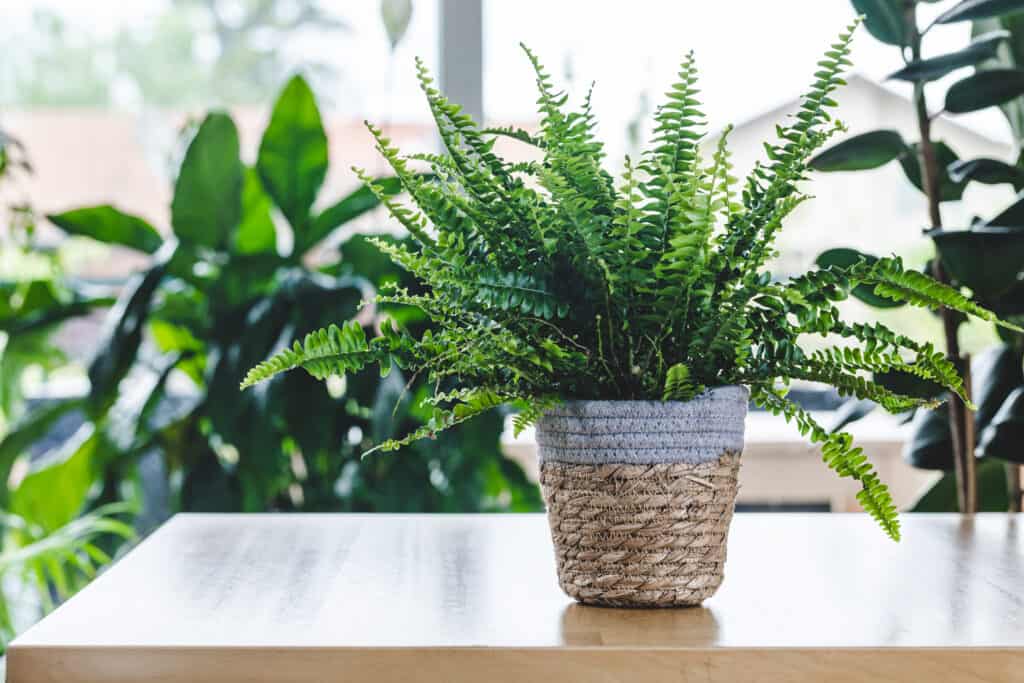
A popular choice among plant enthusiasts, Boston Ferns are also a good choice for snake habitats.
©iStock.com/Benoitbruchez
2. Elkhorn Fern (Platycerium bifurcatum)
The Elkhorn fern gets its name from its striking likeness to antlers. You can find them in most nurseries and home improvement stores.
Depending on the species, you can plant it directly on the substrate or attach it to elevated branches for a proper growth.

The Elkhorn Plant gets its name from its resemblance to antlers. You can let it grow from the substrate or attach it to elevated branches.
©iStock.com/awcain
3. Opuntia species
Snakes living in arid climates prefer prickly pear cacti. For the cacti to survive, expose them to bright lighting or remove them regularly, let them rest outside, and plan to reinstall them in the habitat once they’ve recovered.
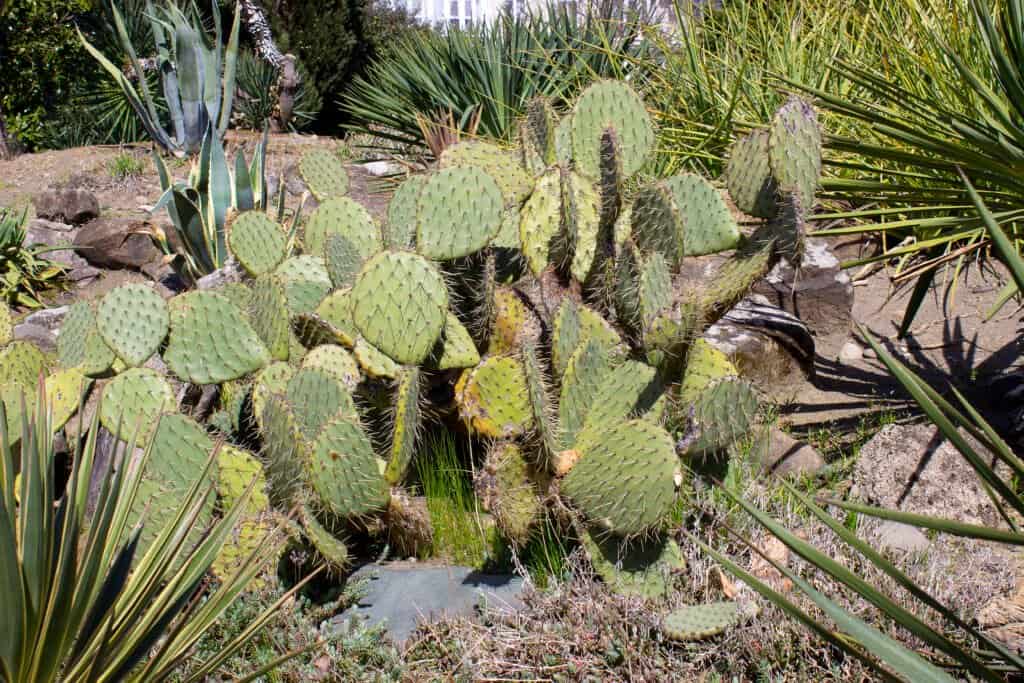
Also known as the Prickly Pear Cactus, the Opuntia Plant is a great option for those with snakes from arid environments.
©iStock.com/Marina Krisenko
4. String-of-pearls (Senecio citriformis)
The string-of-pearls have blue-green leaves with a spike-like appearance. In desert-style vivaria, plants like these require bright lighting for conducive growth. You can easily cut from this plant to start your own and eventually have many more to use.

String of pearls plants have blue-green leaves and a spike-like appearance.
©iStock.com/Bilal photos
5. Golden pothos (Epipremnum aureum)
Golden pothos is preferred for snake enclosures. There are several varieties of golden pothos. They survive in humid, low-light environments, making them perfect for a tropical rainforest-style habitat. Installing pothos in the snake habitat will increase their value.
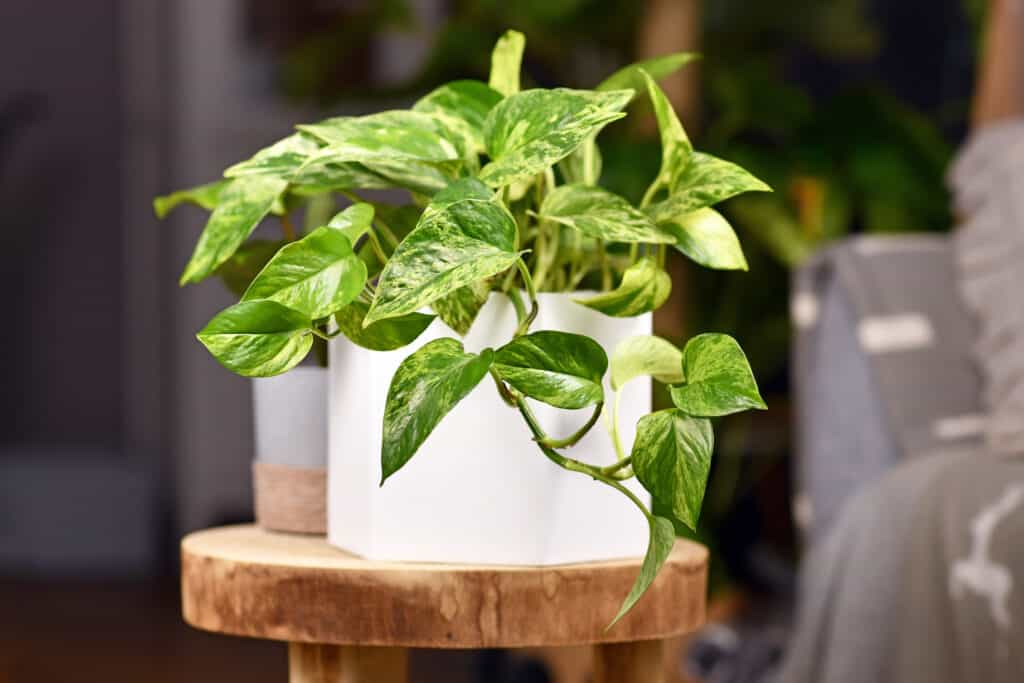
The Golden Pothos grows in humid environments, making it a good choice for tropical-style snake cages.
©iStock.com/Firn
6. Urn Plants (Aechmea recurvata)
Urn plants are widely available in nurseries and home improvement stores and survive in humid environments. Because these plants produce spiky tips, you must be careful when planting and working around them. There are different types of urn plants to choose from, so do your research and select the one that is best for your enclosure.

Urn plants have spiky leaves, so you need to be careful when handling them.
©iStock.com/samuel howell
7. Wandering Jew (Tradescantia zebrina)
The wandering Jew is so-called because it grows along the ground, and it becomes an ideal home for arboreal snakes. It will not thrive on a damp substrate. Check that it is not over-watered. This plant does well in most snake habitats, but you must prune it regularly to prevent other plants being overtaken.

Tradescantia zebrina, also known as the Wandering Jew, can grow just about anywhere.
©iStock.com/Debu Durlav
8. Philodendron hederaceum
Philodendron hederaceum is another houseplant to be considered. Because this species is hardy and does not require bright light to survive, a terrarium usually works well for it. Due to its toxicity, it is better used in humid environments.
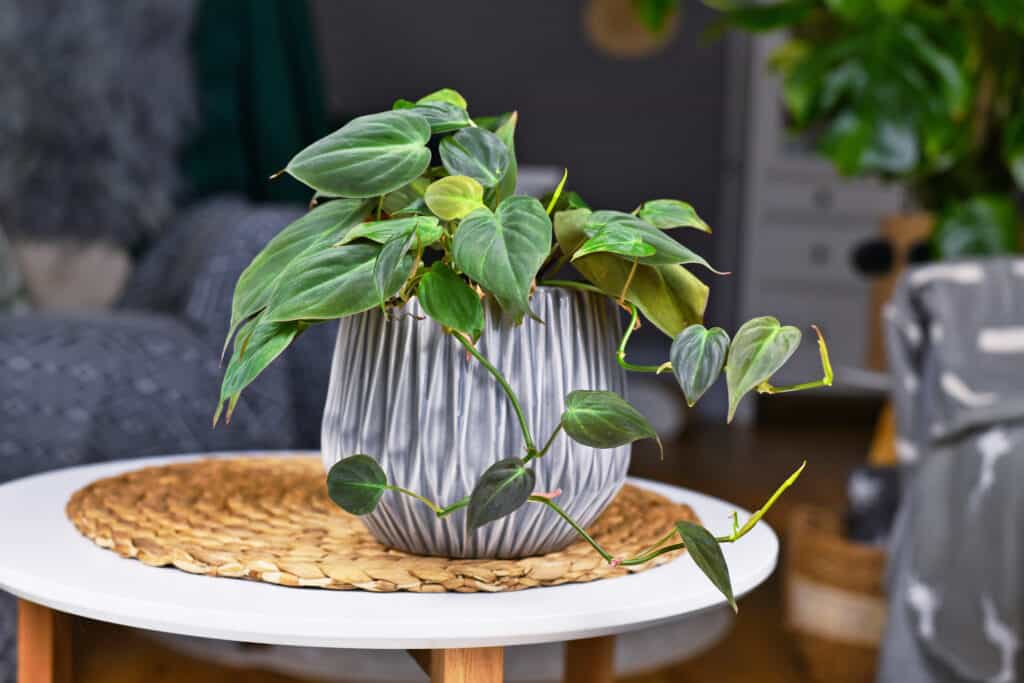
The Philodendron hederaceum is best suited for tropical environments.
©iStock.com/Firn
9. Echeveria laui
These succulent gray-pink leaves appeal to keepers of desert snakes such as sand boas. Several cultivars of this plant species are available on the market.
They differ in appearance, hardiness, and water requirements. You should carefully handpick your cultivar to increase your chances of success.
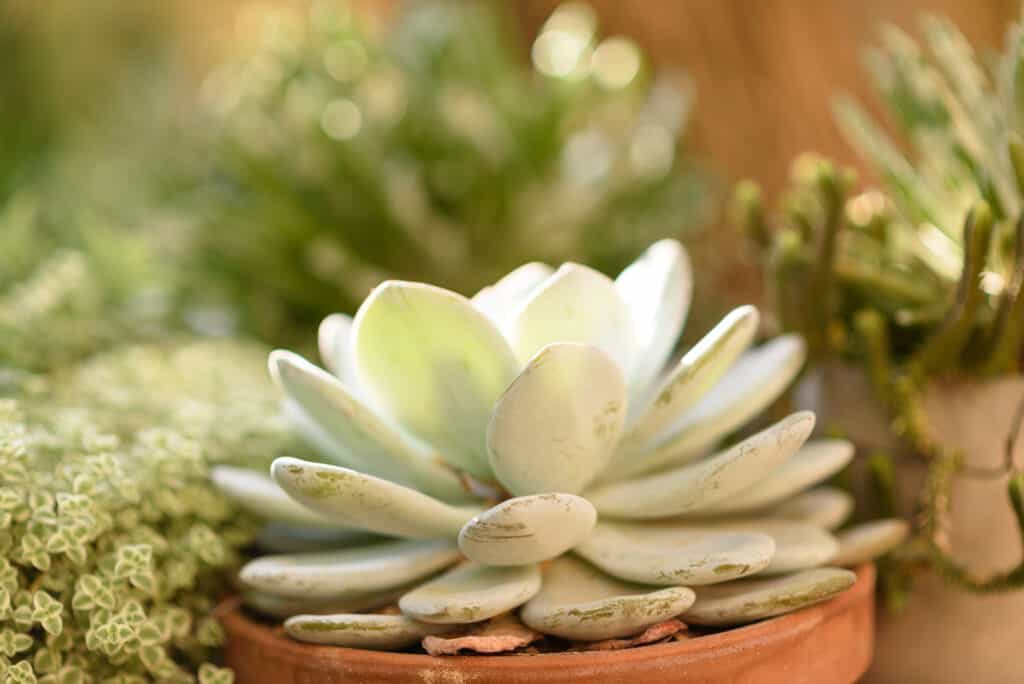
The Echeveria Laui is a great choice for desert snake-owners.
©iStock.com/Inna Reznik
10. Aloe Vera
Aloe vera is famous for its soothing extracts, and this property makes it an ideal plant for arid environments, such as snake terrariums. Because it has a wide variety available, you’re open to select one appropriate for your situation.
Enclosures with a significant height would be ideal for accommodating aloe vera plants’ vertical growth.

The Aloe Vera plant is a great choice for more arid terrariums.
©iStock.com/Nenov
11. Mother-in-Law’s Tongue (Sansevieria trifasciata)
Mother-in-law’s tongue is a favorite houseplant in reptile enclosures. It is best suited to desert-style terrariums because of its drought tolerance, hardiness, and reliance on bright lights.
However, it grows vertically, like a few others we’ve discussed so far, so an enclosure tall enough to house one of these beautiful plants is required.
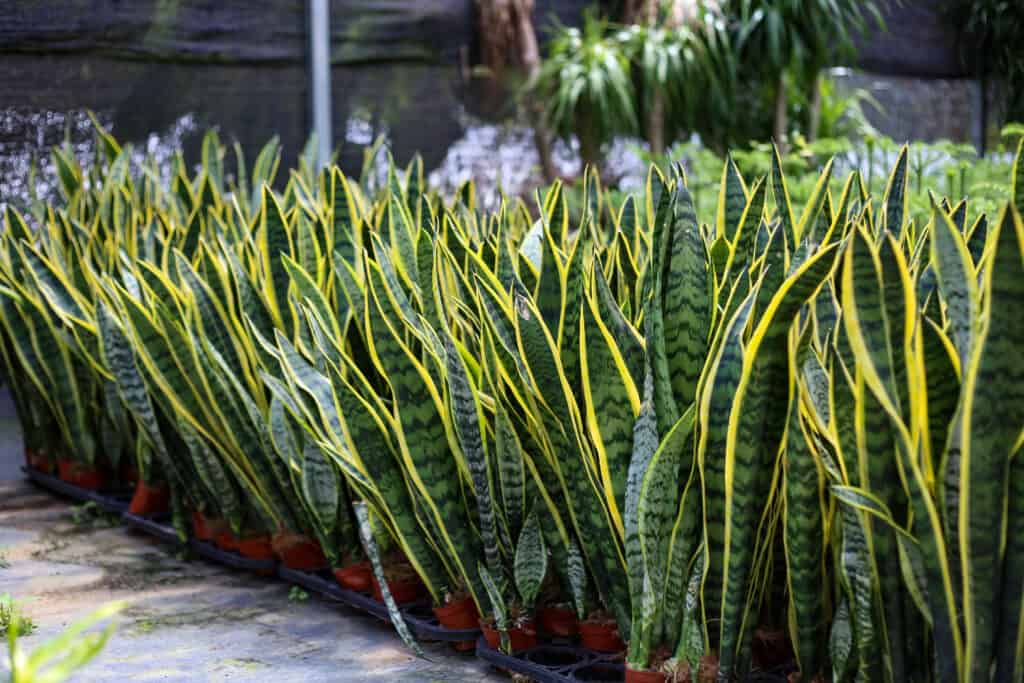
The Mother-in-Law’s Tongue (Sansevieria trifasciata) is a great choice for arid terrariums. But it grows vertically, so make sure your enclosure is tall enough to contain it.
©iStock.com/Joimi Joh Abi
12. Haworthia nigra
While finding a specimen of haworthia nigra may be difficult, you should be able to find one with some effort. Despite its requirement for bright light, this species grows more easily than most other plants. Its bumpy green leaves are ideal for arid snake enclosures.
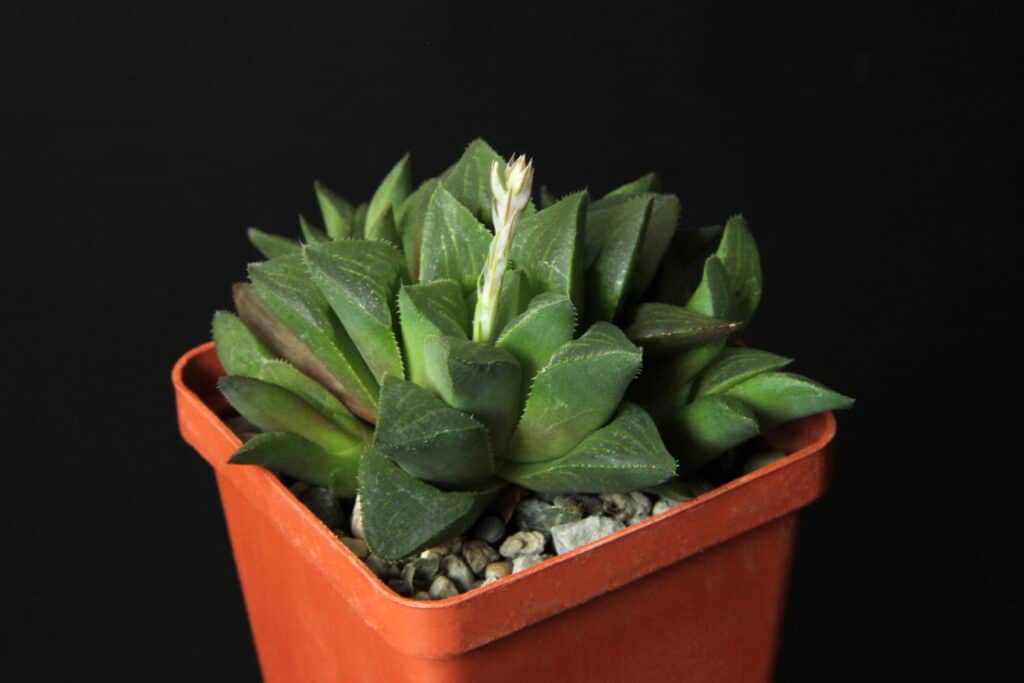
The Haworthia Nigra needs bright light, but actually grows easier than many other plants on this list.
©iStock.com/Red Diamond
13. ZZ Plants
The ZZ plant is a lovely emerald-colored plant that thrives in dry environments with low light. While this plant is harmless to ball pythons, it is somewhat hazardous to humans and other household pets. Handle it cautiously, and ensure your hands are washed after touching it
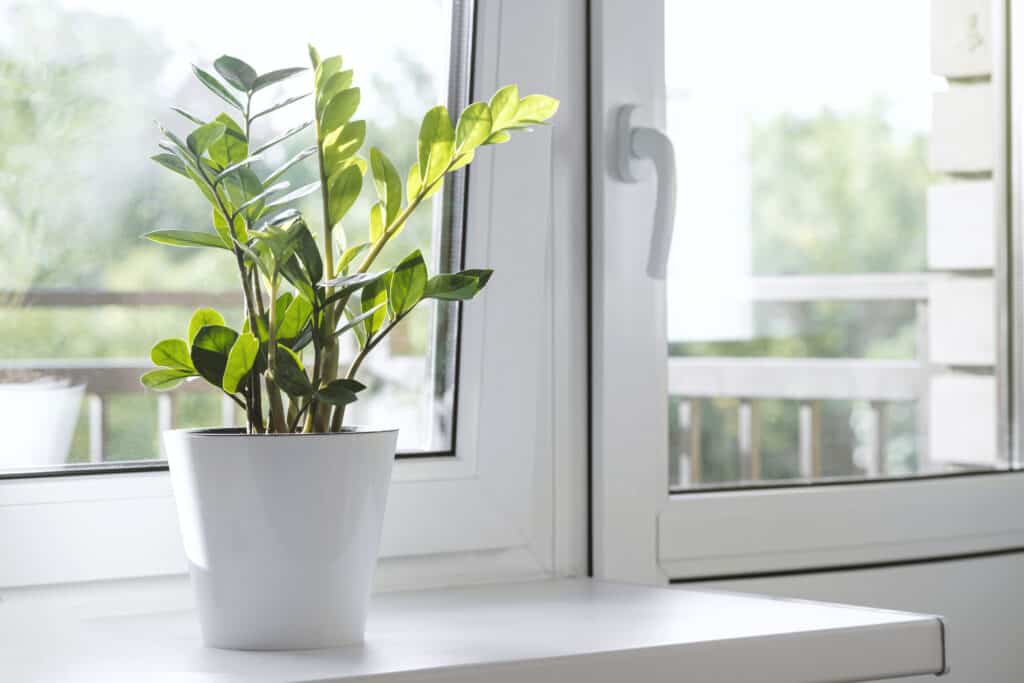
The Zamioculcas Zamiifolia or ZZ Plant thrives in dry environments.
©iStock.com/Kseniia Soloveva
The Basics of Adding Plants to a Snake Habitat
Putting plants in a snake cage is straightforward. Because your snake won’t consume the plants, adding plants to a snake habitat is considerably easier and less dangerous.
However, you’ll want to be cautious and keep your pet’s health and safety in mind to achieve the most favorable results. These are some guidelines to follow;
Choose plants that will grow in your snake’s enclosure’s climate
Most plants have evolved to live in a particular type of environment. Plants are more adaptable than snakes in this aspect, but you’ll still want to choose plants that will thrive in your pet’s environment.
Select the most appropriate installation technique for your needs
Many keepers try to place their plants directly into the enclosure substrate, but you might wish to maintain them in small pots or containers. Use the branches, cork bark, rocks, and other materials to disguise the pots while maintaining a natural aesthetic.
Ensure the plants are adequately prepared before planting
Because you cannot know what pesticides your plant was exposed to before you took it home, it’s best to properly clean the plants with cool water before putting them in your habitat. As an added safety precaution, some keepers like to remove and replenish the potting soil in which the plants are growing.
Attempt to plan the plant layout
You don’t have to worry about your snake eating the plants you add to its habitat, but you could notice that some plants are damaged due to your snake’s activity. As a result, it’s best to put the plants in places where your snake won’t be able to crawl over them. Also, ensure the plants are in places where you can easily get them when it’s time to water them.
Plants should be pruned regularly.
If you successfully establish plants in your snake’s enclosure, you’ll notice that they quickly take over the environment. This can limit the amount of room accessible to your snake, making the enclosure appear cluttered. Avoid this by pruning your plants regularly with a pair of garden scissors.
Conclusion
The truth is that most snakes can survive without the addition of plants. And adding plants to your snake’s habitat can be stressful. However, there are some benefits.
Plants increase the amount of oxygen in the enclosure, add nutrients to the substrate, and help convert waste to fertilizer. Also, a vivarium full of lovely plants will highlight your snake’s beauty.
Ensure you conduct your research and choose the correct plants. Eventually, you may discover that they require little effort, and you and your snake will profit.
The photo featured at the top of this post is © iStock.com/David Kenny
Discover the "Monster" Snake 5X Bigger than an Anaconda
Every day A-Z Animals sends out some of the most incredible facts in the world from our free newsletter. Want to discover the 10 most beautiful snakes in the world, a "snake island" where you're never more than 3 feet from danger, or a "monster" snake 5X larger than an anaconda? Then sign up right now and you'll start receiving our daily newsletter absolutely free.
Thank you for reading! Have some feedback for us? Contact the AZ Animals editorial team.






